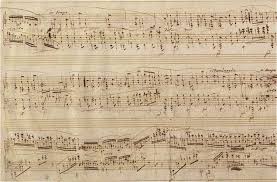
Felix Mendelssohn’s overture, The Beautiful Melusine, was inspired by a legend which Max Derrickson describes:
The legend of the half-mermaid, Melusine, appears to date back over nearly twelve centuries. The arrestingly beautiful Melusine, born of a mortal father and water sprite mother, is cursed to take the form of a serpent from her waist down (a mermaid) one day each week. This was done by her mother, furious with Melusine for entombing her father in a mountain for his mistreatment of her mother. Some years later Melusine is proposed to by a man of nobility. As did her mother years before, she agrees to marriage but with the one condition that she maintain absolute privacy on her “serpent day” of secrecy. Great happiness envelopes the two lovers, until the inevitable day arrives when the condition is broken. Upon being discovered she is doomed to remain in her mermaid form for eternity.
For Mendelssohn, the legend seems to have been a jumping off point. You won’t hear a depiction of the story, although there is a feeling of flowing water throughout the music. At moments, there is a hint of the clear, yet complex imitative counterpoint of J.S. Bach, whose music Mendelssohn was dedicated to reviving.
Here is a great recording of The Beautiful Melusine by Kurt Masur and Leipzig’s Gewandhaus Orchestra. Mendelssohn was principal conductor at the Gewandhaus between 1835 and 1847. The concert hall he would have known, constructed in 1781, was replaced in 1884. That hall was destroyed during the fire-bombing of the Second World War. Conductor Kurt Masur laid the first stone of the foundation for the current Gewandhaus, completed in 1981.
[unordered_list style=”tick”]
[/unordered_list]

